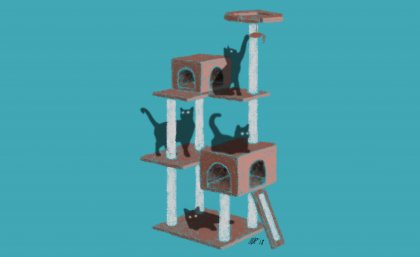
An international team of researchers has developed a theory of multi-level quantum coherence, a step further than the theory which allows the famous Schrödinger’s cat to be in a quantum superposition of being dead and alive at the same time.
The team, including a University of Queensland researcher, has demonstrated the use of its theory through an experiment on a four-level quantum system.
UQ’s Dr Martin Ringbauer said quantum coherence was at the heart of all quantum phenomena and technology.
“Unlike the classical physics that you experience every day – where a ball must be either ‘here’ or ‘there’ – quantum systems are almost always in some form of superposition of ‘here&there’ at the same time,” he said.
"Yet the quantum systems used in today's quantum technology don't stop at 'here' and 'there', but usually have multiple distinct states."
Dr Marco Piani from the University of Strathclyde said that such complex superpositions presented a great opportunity, but also a big challenge for the researchers.
“Imagine a very healthy Schrödinger’s cat not only wanting to eat and play at the same time, but also wanting to climb a pole and poke a toy,” he said.
Beyond the increase in the number of possible ways to create superpositions, the team showed that the properties of such systems were fundamentally different to those of their two-state counterpart.
“Understanding coherence in multi-level systems, is much more complicated than distinguishing presence and absence of coherence, and requires a detailed study of the type and degree of coherence present in the system,” Dr Piani said.
The researchers also developed the tools to tell the difference between a cat that is truly doing all four things at once, and one that does `only’ two at a time, while at other times choosing different options.
Professor Gerardo Adesso from the University of Nottingham said the work provided a comprehensive tool set for characterising, detecting and quantifying the structure of coherence in multilevel systems in any experiment.
The team demonstrated its results on a single particle of light, which in the experiment can be in any superposition of four distinct states.
“We show that being in a multilevel superposition provides advantages in a practical task, which could roughly be described as faithfully reading time off an effective quantum clock,” Professor Adesso said.
The study could help researchers understand and explore the coherent properties of quantum systems, at a time when governments and leading companies are making significant investments in quantum technologies.
The researchers hope the results and tools explained in their work could have far-reaching applications from the foundations of physics to new fields such as quantum biology.
The paper is published in Physical Review X (DOI.org/10.1103/PhysRevX.8.041007).
Media: Martin Ringbauer, m.ringbauer@uq.edu.au; Professor Gerardo Adesso, Gerardo.Adesso@nottingham.ac.uk; Dr Marco Piani, marcopiani@gmail.com.
.jpg)








